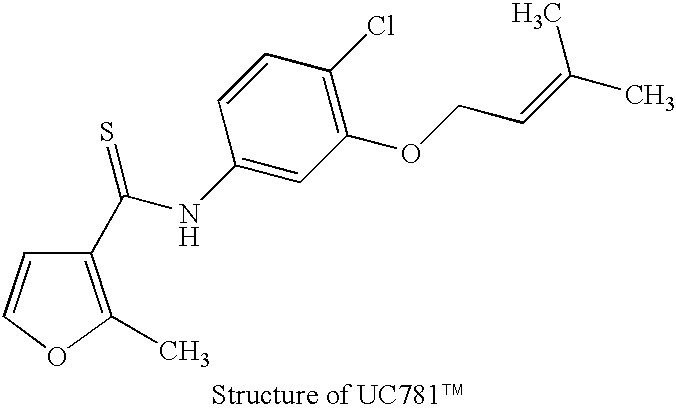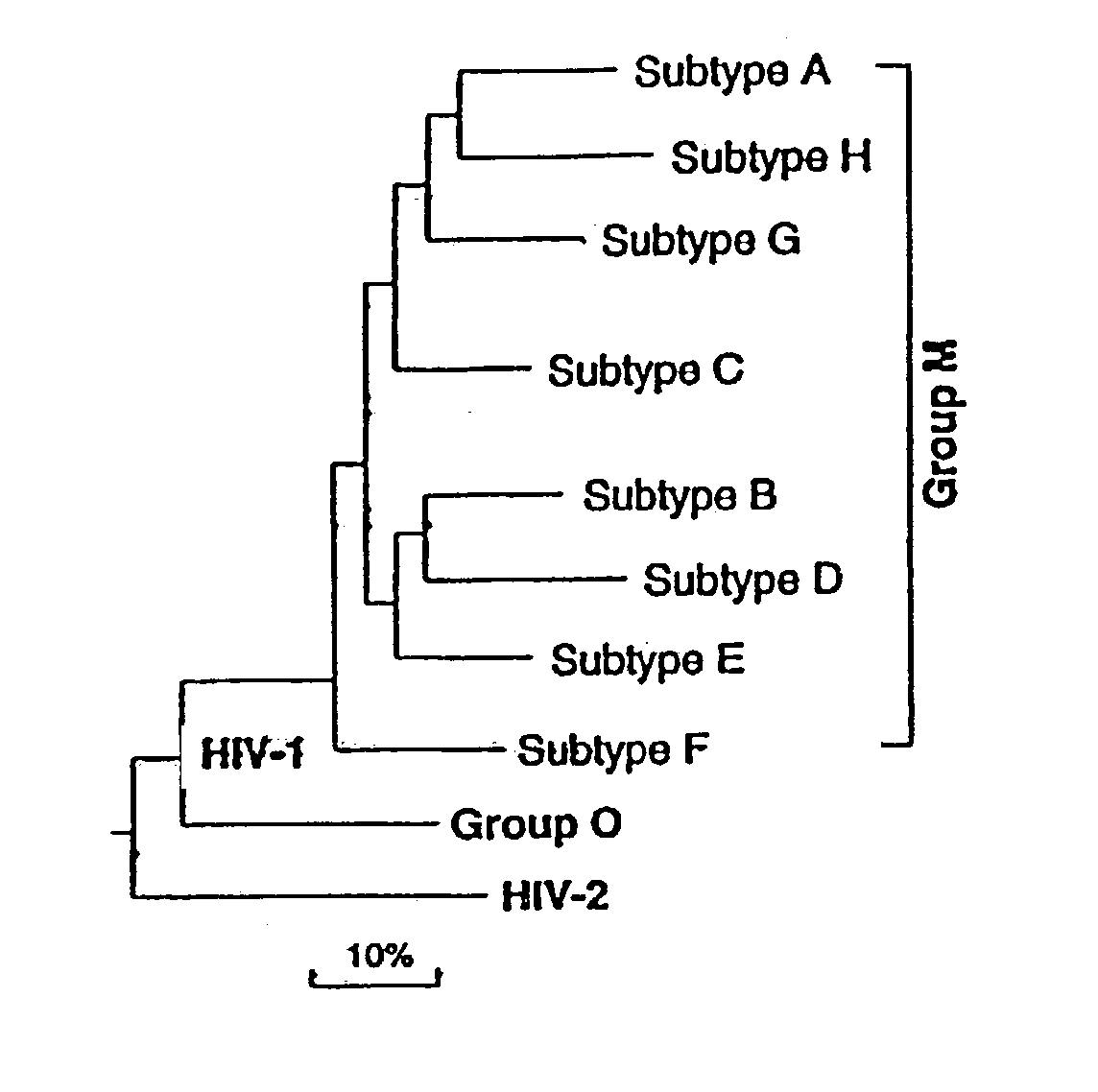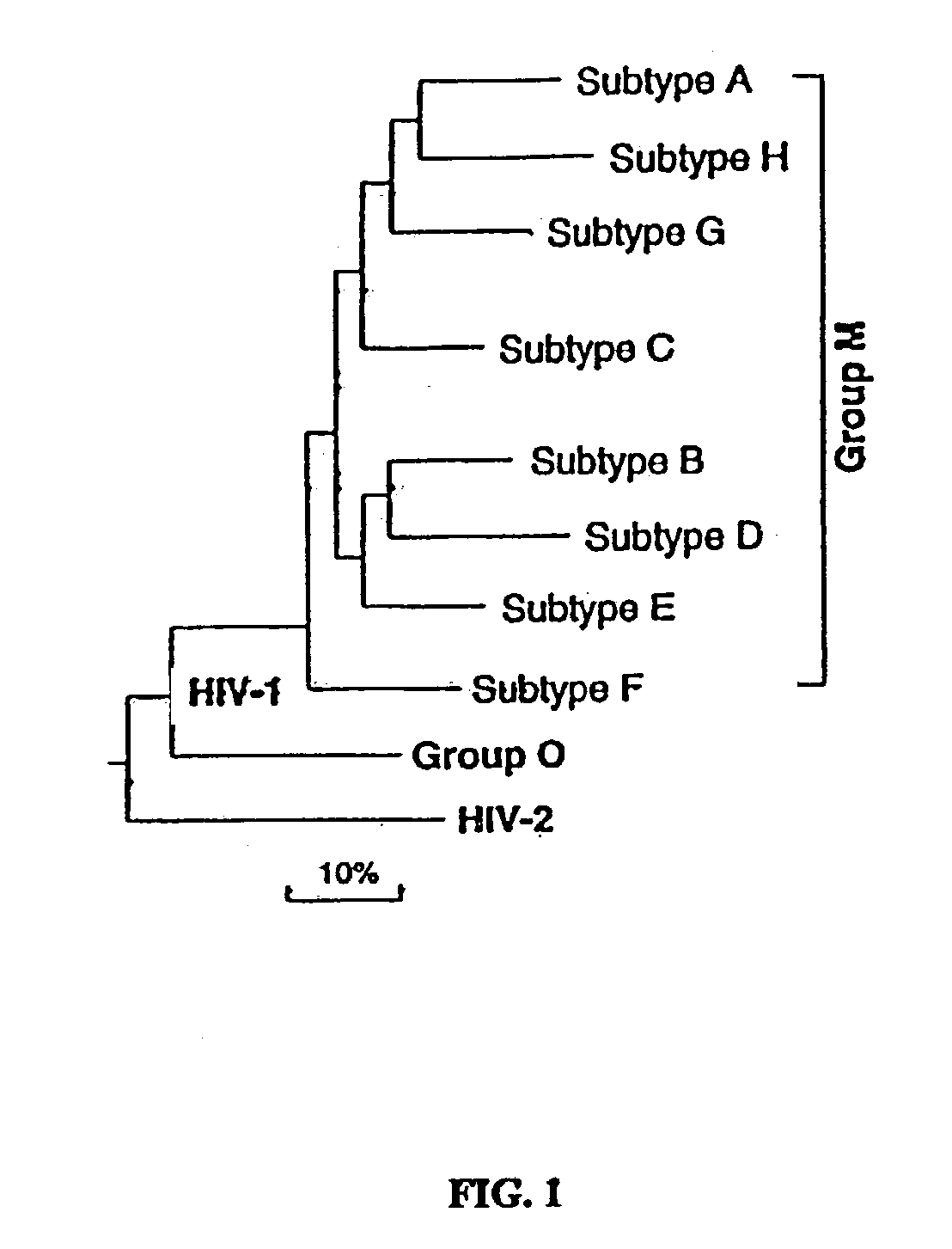Method for the development of an HIV vaccine
a technology of hiv vaccine and method, applied in the field of immunology, disease treatment and prevention, can solve the problems of ineffective hiv vaccines, affecting the effectiveness of existing hiv vaccines, and affecting the immune system to avoid infection, so as to reduce the risk of infection
- Summary
- Abstract
- Description
- Claims
- Application Information
AI Technical Summary
Benefits of technology
Problems solved by technology
Method used
Image
Examples
example 1
5.1 Example 1
Photoaffinity Labels
[0080] One compound that may be used to photoinactivate the reverse transcriptase of HIV-1, is an azido dipyridodiazepinona, 9-Azido-5,6-dihydro-11-ethyl-6-methyl-11H-pyrido[2,3-b][1,5]benzodiazepin--5-one (9-AN). Production of 9-AN is described in Hargrave et al. (1991). It may be prepared by mixing an equimolar mixture of 2-chloronicotinic acid and 4-nitrophenylendiamine heated in sulfolane at 170.degree. C. for 5 hours. After cooling, the precipitate is collected and washed with hot ethanol. The obtained mixture of 8- and 9-nitro-5,6-dihydro-11H-pyrido[2,-3-b]benzodizepin-5-ones, are then methylated with methyl iodide and dimsylsodium in DMSO, and the 5,6-dihydro-6-methyl-9nitro isomer is purified by fractional crystallization. The 8-amino compound is obtained by ethylation with ethyl iodide and dimsylsodium in DMSO followed by stannous chloride reduction of the nitro group. The 8-amino compound is then converted to the azide by diazotization with...
example 2
5.2 Example 2
Inactivation of HIV Particles and HIV-Infected Cells
[0082] The inactivation of HIV can be accomplished by taking advantage of compounds that bind the HIV reverse transcriptase with a high degree of specificity. Using the technique of photolabeling, a compound with high specific affinity for the HIV-1 reverse transcriptase can then be turned into an "active" moiety which will produce an irreversible inactivation of the reverse transcriptase upon exposure to ultraviolet light irradiation. This inactivation, in the case of the compounds already described and known to have this effect, meets the requirement of being specific for the reverse transcriptase of HIV-1. That is, their labeling and photoactivation is not accompanied by the alteration of any other component of the viral particle than the reverse transcriptase of HIV-1. That is an important element of this invention since the irreversible inactivation of HIV-1 reverse transcriptase will lead to non-infectious partic...
example 3
5.3 Example 3
Production of Noninfectious Nascent Virus from UC781.TM.-Treated HIV Infected Cells
[0091] In addition to the inactivation of purified virus, UC781.TM. has been shown to inactivate nascent virus from HIV-infected cells grown in the presence of the compound (Borkow et al., 1997, incorporated wherein by reference). The methods described by Borkow et al. may be used to produce inactivated virus for use in the present invention. Furthermore, the methods may be used to create a whole-cell vaccine in which the cells are HIV infected but rendered noninfectious by UC781.TM.. A whole cell vaccine comprises the injection of HIV-infected cells. The injection of whole cells may provide a more vigorous immune response to the virus. The methods of Borkow et al. (1997) are described below.
5.3.1 Incubation of Chronically HIV-1 Infected H9 Cells with UC781.TM.
[0092] Chronically infected H9 cells (5.times.10.sup.5 cells) are incubated with 10 .mu.M of UC781.TM. in a total volume of 1 ml o...
PUM
| Property | Measurement | Unit |
|---|---|---|
| time | aaaaa | aaaaa |
| total volume | aaaaa | aaaaa |
| volume | aaaaa | aaaaa |
Abstract
Description
Claims
Application Information
 Login to View More
Login to View More - R&D
- Intellectual Property
- Life Sciences
- Materials
- Tech Scout
- Unparalleled Data Quality
- Higher Quality Content
- 60% Fewer Hallucinations
Browse by: Latest US Patents, China's latest patents, Technical Efficacy Thesaurus, Application Domain, Technology Topic, Popular Technical Reports.
© 2025 PatSnap. All rights reserved.Legal|Privacy policy|Modern Slavery Act Transparency Statement|Sitemap|About US| Contact US: help@patsnap.com



